Art Fairs
How the Silo, a New Gallery Run by a Writer and a Painter, Sees Advocating for Artists as ‘Practicing Art Criticism by Other Means’
The gallery debuted at last week's Outsider Art Fair.
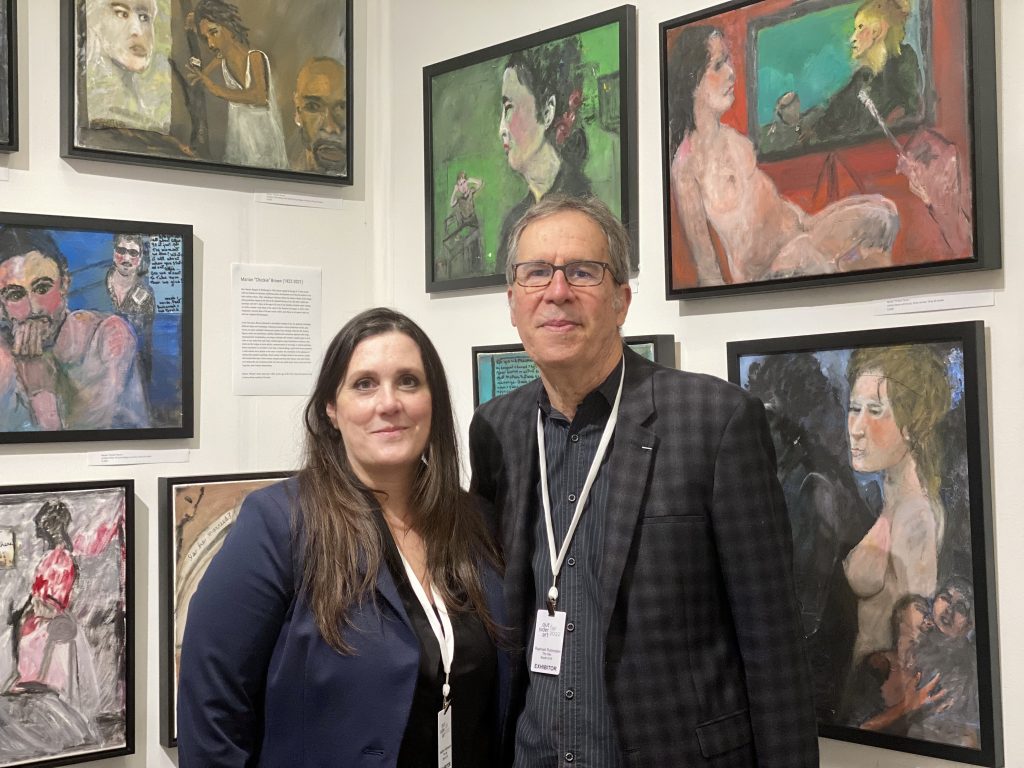
The gallery debuted at last week's Outsider Art Fair.

Sarah Cascone

For some time, husband and wife duo Raphael Rubinstein and Heather Bause Rubinstein—an art critic and an artist, respectively—have been planning to open an art gallery. The idea was to launch the Silo: Living With Art Gallery next year, in 2023, in the 19th-century farmhouse Raphael purchased some 20 years ago in the Pocono Mountains, outside the town of Milanville, Pennsylvania.
However, the official debut of the Silo came both suddenly and ahead of schedule, when the opportunity to show at New York’s Outsider Art Fair fell into their lap just a few weeks ago. The pair ended up showing at the fair three artists they discovered in Houston, where Raphael spends one semester each year as a professor at the University of Houston.
One of these is Marian “Chickie” Brown, a Houston painter who died last year at the age of 98.
“She was self-taught and she didn’t start painting until her 60s, because she had so many children,” Heather told Artnet News at the fair’s VIP preview. “Her family had her paintings and they were going to throw them away. I said ‘no, no, no—I’ll take them.”
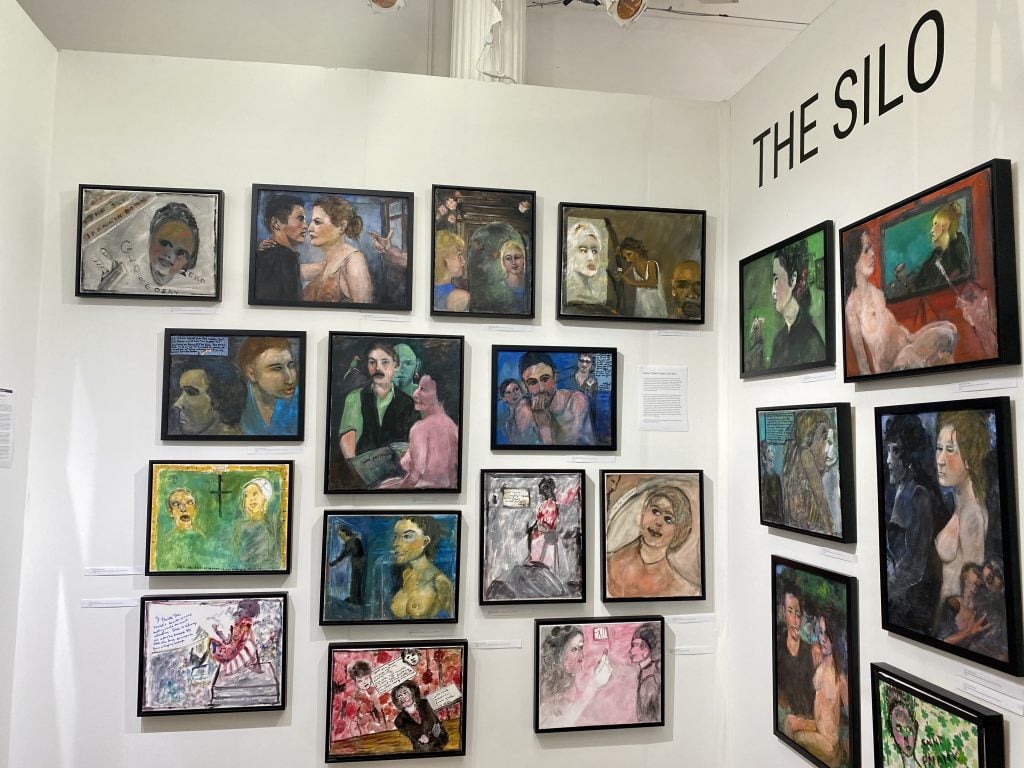
The Silo: Living With Art Gallery in Milanville, Pennsylvania, at New York’s Outsider Art Fair. Photo by Sarah Cascone.
“We photographed all the paintings and we emailed dealer Andrew Edlin [founder of the Outsider Art Fair] saying, ‘maybe you’d be interested in working with this artist,'” Raphael said. “Instead, he said ‘we’ve got one booth left, would you want it?'”
With only a few weeks’ notice, the two dove right in, pairing Brown’s work with pieces by two artists they had first encountered at Houston’s Redbud Gallery: Daniel Johnston, a celebrated singer-songwriter, and Berry Horton, a little-known African American artist from Chicago who lived from 1917 to 1987.
“He was part of this vibrant LGTBQ scene, and a lot of his work is exploring sexuality, especially hermaphrodite imagery,” Raphael said of Horton. “He never exhibited his work. But after he died, one of his supporters, Susan Cayton Woodson, an important African-American art collector and dealer, saved 140 of his drawings, which she kept under her bed.”
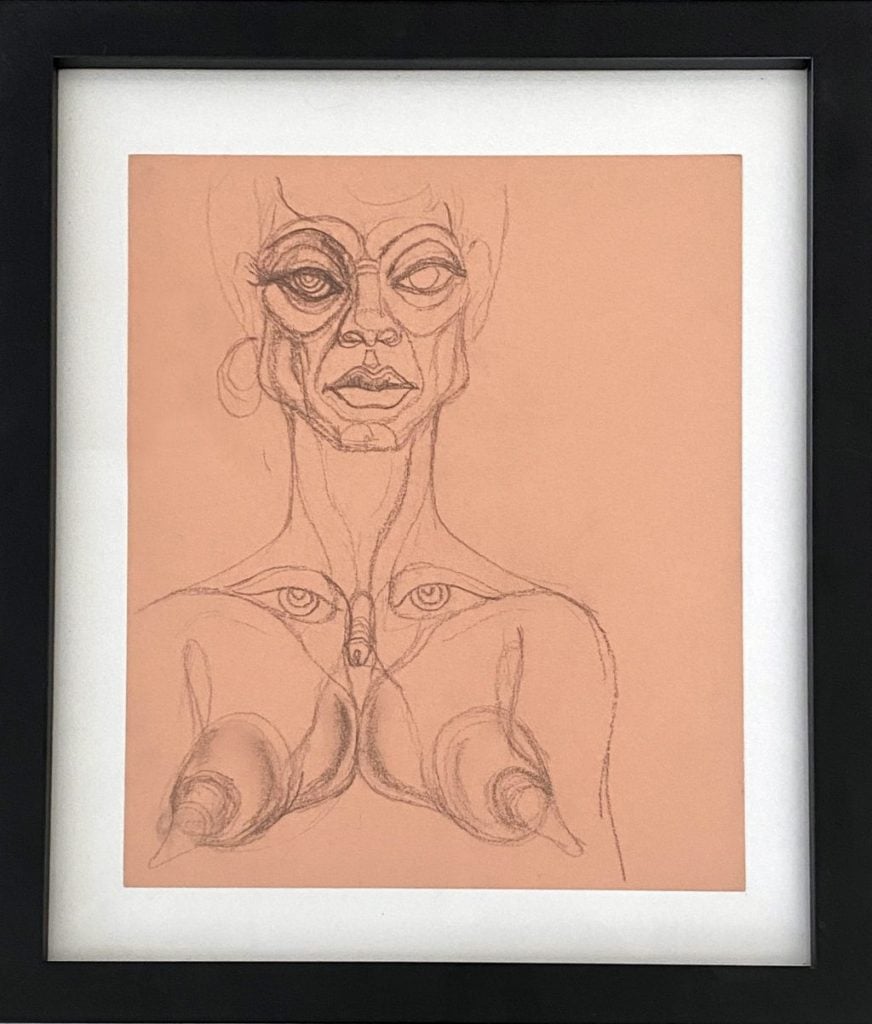
Berry Horton, Untitled. Photo courtesy of the Silo: Living With Art Gallery, Milanville, Pennsylvania.
Eventually, in 2016, those works made their way to Redbud for Horton’s first-ever solo show. Raphael gave the exhibition a glowing review in Art in America, and has been a champion of the artist ever since.
“I thought it was incredibly important work, both historically and artistically. I expected, naively, that museums would acquire his work and it would be recognized—but of course, nothing happened,” Raphael said.
“Now, six years later, we’re launching this gallery, and I still feel evangelical about Horton,” he added. “In some ways, this is practicing art criticism by other means.”
So far, he was feeling good about it. “I have never enjoyed art fairs as a critic,” Raphael admitted in an email after the fair’s conclusion, “but much to my surprise, I really enjoyed being on the other side of the fence, talking to strangers all day about art.”
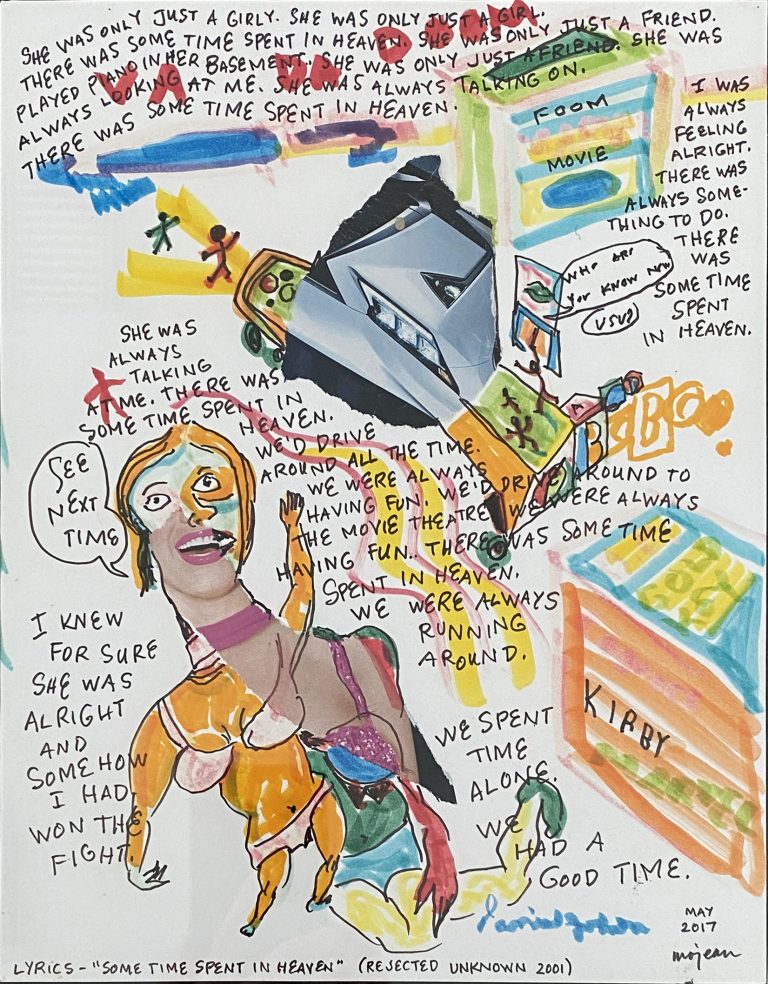
Daniel Johnston and Marjory Johnston, Untitled. Photo courtesy of the Silo: Living With Art Gallery, Milanville, Pennsylvania.
One story he and Heather were particularly excited to share was that of Johnston, who continued to make both music and art despite suffering from bipolar disease. In the six years before his death in 2019, he began collaborating with his sister and caretaker, Marjory Johnston, on a series of collaged paintings.
“One day she tore a photograph out of a magazine and glued it onto one of his drawing papers, and then she had to go make a phone call,” Heather explained. Johnston began building on the image fragment, forming a drawing around it.
Soon, the two had developed a new practice, featuring found imagery, drawings, and song lyrics from Johnston’s long musical career.
“As brother and sister, they were so in tune with one another,” Raphael said.
Even in the outsider art world, brand names have power, which can be a challenge for emerging galleries. As the best-known of the three artists featured in the booth, it perhaps was to be expected that Johnson’s work would be the gallery’s best-seller.
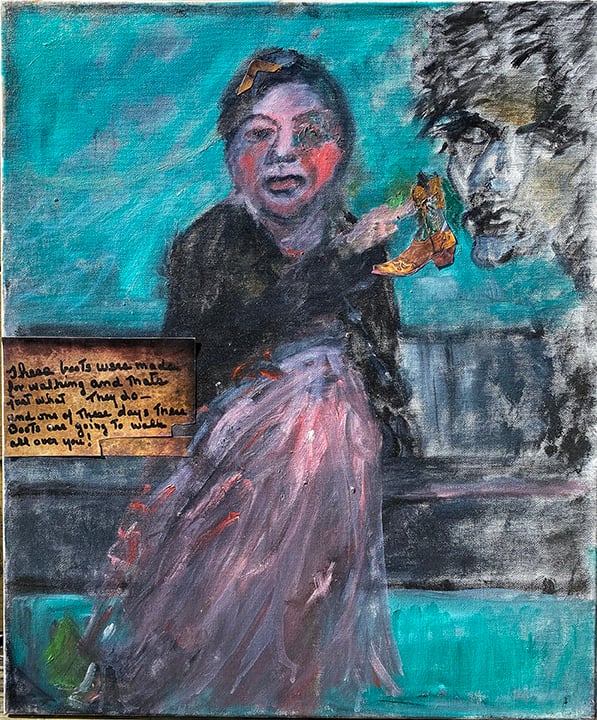
Marian “Chickie” Brown, These Boots. Photo courtesy of the Silo: Living With Art Gallery, Milanville, Pennsylvania.
“We did very well with the Daniel and Marjory Johnston collage-drawings, but we didn’t sell much of Chickie Brown’s or Berry Horton’s work,” Raphael said in an email. “I don’t think this had anything to do with the work itself, but rather with the fact that they are unknown artists. Even at an Outsider Art fair, where you would expect people to want to make discoveries and take chances, people seem hesitant to embrace anything unproven in the market.”
For the newly minted gallerists, however, there was something more important than the financial bottom line. The Silo’s business model will be an 80/20 split between the artists and the gallery, a far more advantageous model for artists than the industry’s typical 50 percent commission.
The plan is for the gallery to showcase a wide range of work, from figures both emerging and established, historic and contemporary, self-taught and conventionally trained. While the couple continues renovation work on the Milanville farmhouse, they also plan to host various pop-up exhibitions in unexpected places throughout New York City.
“We want interject art into everyday life, for people who are going to the grocery store or walking their dogs or heading to the subway,” Heather said. “If people could live with art, people would be happier.”
The Silo: Living With Art Gallery will be located at 596 Boyds Mills Road, Milanville, Pennsylvania.